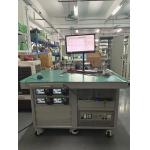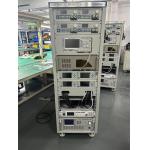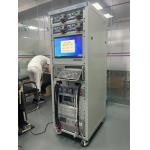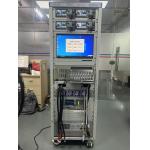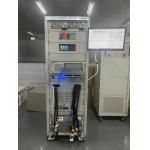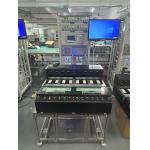Power detection equipment is a critical tool used for testing,
analyzing, and monitoring the performance of power systems. Its
functions cover various fields such as power security, efficiency
optimization, and fault troubleshooting. Below is a detailed
explanation of its core functions and application scenarios:
Ensuring Safe Operation of Power Systems
- Over-voltage/Under-voltage Protection: Monitor voltage fluctuations
in real time to prevent equipment damage due to excessively high
voltage (such as lightning strikes) or too low voltage (such as
grid failures).
- Leakage and Short-circuit Detection: Identify hidden dangers such
as insulation breakdown and grounding faults to avoid the risk of
electric shock or fire.
- Harmonic Analysis: Detect harmonic pollution in the power grid
(such as high-order harmonics generated by nonlinear loads) to
reduce interference with precision equipment.
Application Scenarios:
- Household Electricity Use: Leakage protectors (RCDs) automatically
cut off abnormal circuits.
- Industrial Sites: Install power quality analyzers to prevent
production line downtime.
Evaluating Power Performance and Energy Efficiency
- Power Parameter Measurement: Accurately measure voltage, current,
power factor, active/reactive power, etc., to optimize energy usage
efficiency.
- Energy Efficiency Certification: Verify that equipment complies
with international standards (such as 80 PLUS power supply
certification) to reduce standby power consumption.
- Load Capacity Testing: Simulate different load conditions (such as
peak and continuous loads) to check the stability of the power
supply.
Application Scenarios:
- Data Centers: Test the switching time and load-carrying capacity of
UPS (Uninterruptible Power Supplies) to ensure uninterrupted server
power.
- New Energy Field: Evaluate the conversion efficiency of
photovoltaic inverters (such as MPPT tracking performance).
Fault Diagnosis and Preventive Maintenance
- Waveform Analysis: Capture voltage/current waveforms with an
oscilloscope to identify distortions (such as voltage sags and
frequency deviations).
- Battery Health Monitoring: Measure parameters such as internal
resistance and capacity to predict the aging risk of batteries
(such as backup power for telecommunication base stations).
- Thermal Imaging Detection: Use infrared thermography cameras to
locate local hot spots on power equipment to avoid malfunctions
caused by poor connections.
Application Scenarios:
- Electric Vehicle Charging Stations: Regularly test the output
characteristics of charging modules to prevent interruptions during
charging.
- Medical Equipment: Ensure the power purity supplied to sensitive
equipment such as MRI and CT machines.
